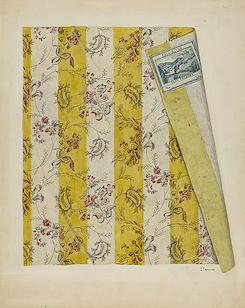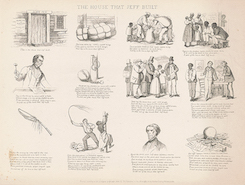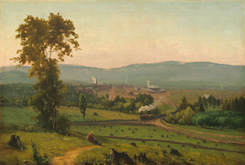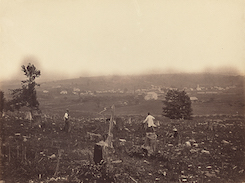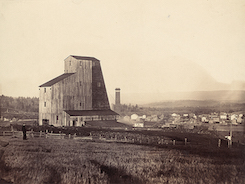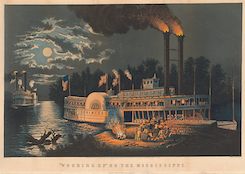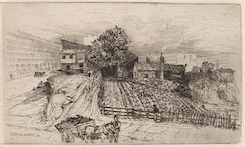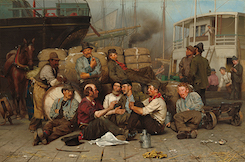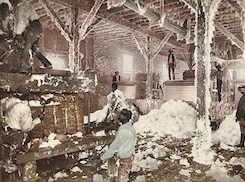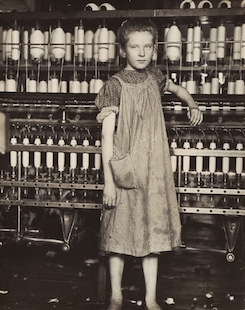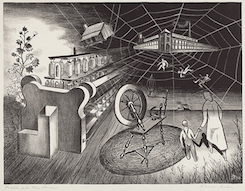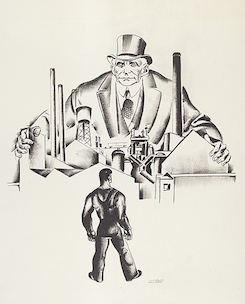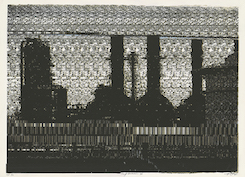How did the Industrial Revolution change the United States?
What makes industrialization possible?
How does art reflect the varying experiences within a capitalist economy?
In 1899 an unknown photographer documented the interior of a cotton gin operation in Dahomey, Mississippi. The image reveals the challenging and stifling work of processing raw cotton in the humidity of the southern United States. In the foreground, African Americans pack and press cotton into a massive bale. Others stand in the background next to cotton gins, machines that separated sticky seeds from plant fibers. Cotton clings to the walls and rafters of the room.
By 1860, 61 percent of the world’s raw cotton originated in the southern United States. Nearly all of this cotton was grown and processed by enslaved African Americans on lands seized from Native Americans. The cotton was shipped to industrial giant Great Britain, which imported 75 percent of its raw cotton from the United States, as well as to factories in the northern United States, where the fiber was spun, dyed, woven, and printed. Cotton was key to the United States becoming a global economic powerhouse.
The start of the US Industrial Revolution is often dated to 1793, when the first water-powered, roller-spinning textile mill opened in Pawtucket, Rhode Island. It was developed in part by Samuel Slater, an English textile apprentice who memorized British mill designs—in defiance of British laws banning their export—and then immigrated to the United States.



